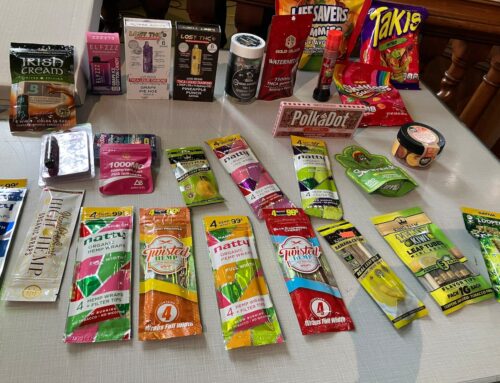Utah jumps two spots in chemical releases, EPA says. Here’s why.
July 6, 2025
Utah jumped to second in a federal database of states’ total toxic chemical releases – a rise mostly attributable to the Bingham Canyon Mine, one of the largest open-pit copper mines in the world.
The Rio Tinto-owned mine produces copper used in electric motors and power lines, tellurium for solar panels and, in smaller quantities, other precious metals like gold and silver.
As it does, the mine also releases millions of pounds of arsenic, lead, selenium, mercury and other toxic chemicals – including some that can damage the brain and nervous system, cause insomnia and cancer – every year, according to data from the U.S. Environmental Protection Agency’s Toxics Release Inventory, or TRI.
Many of those chemicals come to rest in massive tailings ponds to the north, and Kennecott gathers and disposes of the crystals left behind as the water evaporates.
Because the mine moves “millions of tons” of dirt and rock with naturally occurring trace levels of metals reportable to the federal government each year, the facility manages a massive amount of waste that it must report as part of the TRI program, according to a statement sent by Jane Putnam, spokesperson for Rio Tinto Kennecott.
But the mine is doing what it can to reduce releases of TRI-reportable chemicals and compounds, Putnam said, including a switch to renewable diesel and continuous monitoring of emissions.
Second only to Alaska’s zinc mining
Facilities in certain industries – typically linked to manufacturing, metal mining, electric power generation and hazardous waste treatment – must report how they’re handling certain chemicals. Those reports, according to the federal government, must include treatment and environmental releases.
The EPA’s Toxic Release Inventory tracks those chemical releases, showing what chemicals facilities use in communities, how those facilities manage waste – including through environmental releases – and whether quantities of chemicals and releases have changed over time.
Based on the most recent TRI report available, facilities in Utah released 284.97 million pounds of toxic chemicals into the environment in 2023.
That’s the second most of any state behind Alaska, meaning Utah leapt past Texas and Nevada in a year. It’s also 103.1 million pounds more than facilities in Utah reported in 2022.
More than 90% of the toxic chemicals released in Utah came from the Kennecott copper mine and smelter. The increase in releases at the mine was also more than the statewide increase, meaning it canceled out drops at other facilities.
That doesn’t necessarily mean Kennecott mined more ore, according to the EPA, but rather that it pulled from sources with less usable material.
The EPA said small changes in ore composition based on where a company is mining can result in “a huge fluctuation” and that this is a likely reason for the change, not an increase in production. Kennecott confirmed this.
It also doesn’t matter whether material leaves Kennecott property, the company’s statement added – any movement of material is considered a release.
Kennecott reported 260.9 million pounds of releases in 2023, compared to 151.6 million pounds in 2023.
The facility with the next-biggest releases both years was Clean Harbors, a hazardous waste company that reported 5.93 million pounds at one facility in 2023 and 2.74 million pounds at another.
The fact that a mining facility has the most toxic chemical releases isn’t unusual, as the EPA explains on a page about why the metal mining sector reports the largest quantities of toxic chemical releases. The federal agency credits that to handling lots of material and waste rock each year.
Nevada and Alaska also have high amounts of toxic chemical releases because of mining, though they’re primarily mining for gold and zinc, instead of copper.
The Beehive State also had the most pounds of toxic chemicals released per square mile in 2023. Utah was previously behind smaller states in 2022, which had reduced releases in 2023.
Protections and reductions
Though toxic chemicals can cause major damage to the environment and people, the U.S. has policies and programs in place to prevent that, experts have previously told The Salt Lake Tribune.
Part of that includes federal requirements like reporting releases of chemicals in the TRI, which facilities must complete for 2024 by July 1, 2025.
The EPA noted in its statement that some sectors – especially metal mining – aren’t well suited to pollution prevention.
“Metal mines typically don’t have many opportunities to implement pollution prevention, since changes in their releases are more dependent on ore composition than specific operations or input,” the federal agency said.
Rio Tinto is actively working to reduce releases of TRI-reportable chemicals at the mine and smelter, Putnam said.
Efforts include:
Search
RECENT PRESS RELEASES
Related Post



